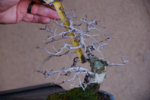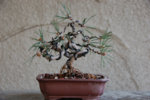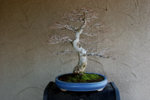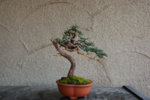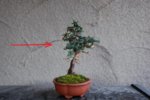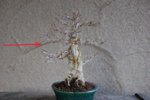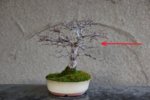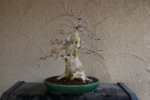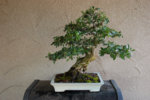Walter Pall
Masterpiece
I believe it has to do with body language. Everybody by instinct can read body language. In all cultures and everywhere a human can tell whether someone looks at him, seems to like him, seems to hate him, seems to be aggressive. If I stand in front of you and my head leans backward it seems arrogant, negative. If I slightly bow my head towards you I seem friendly. if I strongly move my head towards you it seems aggressive.
Like all beasts the humans are self centered and think everything is about them. Without really thinking we instinctively see the human body language in a tree and somehow have the feeling that this is a nice tree if the artist slightly moved the head forward.
I really strongly believe in this and always would try to style a tree with the head slightly forward if at all possible. If the whole tree leans back a little but the head comes forward it still can look right also. If a tree has a dynamic movement to one side it is in my eyes very important to have the head moving strongly towards that side. Then it should also in addition move slightly towards the viewer.
Like all beasts the humans are self centered and think everything is about them. Without really thinking we instinctively see the human body language in a tree and somehow have the feeling that this is a nice tree if the artist slightly moved the head forward.
I really strongly believe in this and always would try to style a tree with the head slightly forward if at all possible. If the whole tree leans back a little but the head comes forward it still can look right also. If a tree has a dynamic movement to one side it is in my eyes very important to have the head moving strongly towards that side. Then it should also in addition move slightly towards the viewer.


